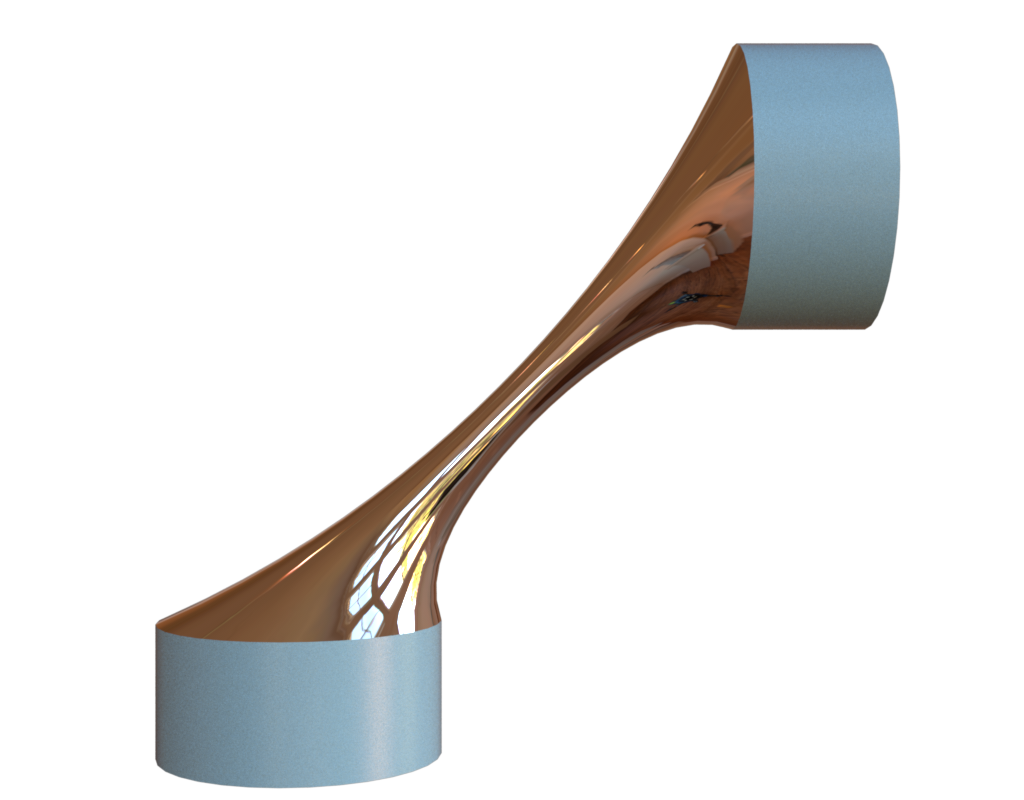Mesh deformation¶
This example aims to visualize the deformed surface that are k-harmonic with k=1,2,3 and 4. This example is inspired by figure 2 from the paper "An Intuitive Framework for Real-Time Freeform Modeling".
Data¶
The input cylinder is generate with Blender, and its deformed shapes are generated using the script deform.py.
Code¶
#!/usr/bin/env python
import hakowan as hkw
# Handle layer with rough plastic material.
handles = (
hkw.layer()
.material("RoughPlastic", "steelblue")
.transform(hkw.transform.Filter(data="label", condition=lambda x: x in [1, 2]))
)
# Deformed region with smooth conductor material.
deformed_region = (
hkw.layer()
.material("Conductor", "Hg")
.transform(hkw.transform.Filter(data="label", condition=lambda x: x == 0))
)
# Create four different layers with different inptu data.
l1 = (handles + deformed_region).data("data/cylinder_1.msh")
l2 = (handles + deformed_region).data("data/cylinder_2.msh")
l3 = (handles + deformed_region).data("data/cylinder_3.msh")
l4 = (handles + deformed_region).data("data/cylinder_4.msh")
# Render the layers.
config = hkw.config()
config.z_up()
config.sensor.location = (0, -3, 0)
hkw.render(l1, config, filename="results/cylinder_1.png")
hkw.render(l2, config, filename="results/cylinder_2.png")
hkw.render(l3, config, filename="results/cylinder_3.png")
hkw.render(l4, config, filename="results/cylinder_4.png")



